Abstract:
This article proposes a wideband differential fed circularly polarized (CP) antenna [48% overlapped bandwidth, which is the minimum value of axial ratio (AR) bandwidth, g...Show MoreMetadata
Abstract:
This article proposes a wideband differential fed circularly polarized (CP) antenna [48% overlapped bandwidth, which is the minimum value of axial ratio (AR) bandwidth, gain bandwidth, and impedance matching bandwidth] with multiple beams radiation across V- and W-band enabled by a parabolic reflector, a long-slot radiator, and a wideband 3-D printed polarizer. The long-slot structure is an array consists with substrate integrated waveguide (SIW)-based open-slot elements (the vias besides a conventional SIW slot are moved to form an open slot), which yields wideband characteristics when compared with traditional slot array. Cooperating with wideband parabolic reflector and modified 3-D printed polarizer, it finally achieves 48% CP bandwidth. Finally, by setting multiple ports on the feeding network, multibeam radiation can be achieved. For validation, a multibeam CP antenna operating from 58 to 94.5 GHz with 20.5-dBic peak gain level and three radiation beams is fabricated and measured. Based on the authors’ extensive research, the proposed antenna yields a superior bandwidth when compared with recently reported millimeter-wave (mm-wave) long-slot structures and high-gain CP antennas.
Published in: IEEE Transactions on Antennas and Propagation ( Volume: 72, Issue: 2, February 2024)
Funding Agency:
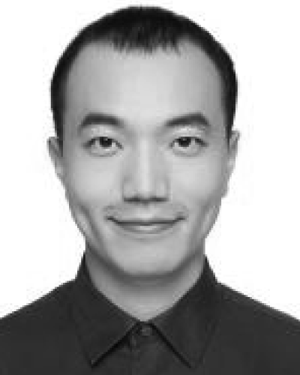
State Key Laboratory of Radio Frequency Heterogeneous Integration, College of Electronics and Information Engineering, Shenzhen University, Shenzhen, China
Qing-Yi Guo (Member, IEEE) was born in Longyan, Fujian, China. He received the B.E. degree in information engineering and the M.E. degree in electronic and information systems from the South China University of Technology, Guangzhou, China, in 2013 and 2016, respectively. He received the Ph.D. degree in electrical engineering from the City University of Hong Kong, Hong Kong, in 2020.
From 2020 to 2021, he was a Post-Doctor...Show More
Qing-Yi Guo (Member, IEEE) was born in Longyan, Fujian, China. He received the B.E. degree in information engineering and the M.E. degree in electronic and information systems from the South China University of Technology, Guangzhou, China, in 2013 and 2016, respectively. He received the Ph.D. degree in electrical engineering from the City University of Hong Kong, Hong Kong, in 2020.
From 2020 to 2021, he was a Post-Doctor...View more

China Academy of Information and Communications Technology, Beijing, China
Xuan Yi was born in Anhui, China. She received the B.Eng. degree in electronic engineering from the Beijing University of Posts and Telecommunications (BUPT), Beijing, China, in 2015, and the Ph.D. degree in electrical engineering from the City University of Hong Kong (CityU), Hong Kong, China, in 2019.
She is currently with the China Academy of Information and Communications Technology (CAICT), Beijing and involved in 3GP...Show More
Xuan Yi was born in Anhui, China. She received the B.Eng. degree in electronic engineering from the Beijing University of Posts and Telecommunications (BUPT), Beijing, China, in 2015, and the Ph.D. degree in electrical engineering from the City University of Hong Kong (CityU), Hong Kong, China, in 2019.
She is currently with the China Academy of Information and Communications Technology (CAICT), Beijing and involved in 3GP...View more
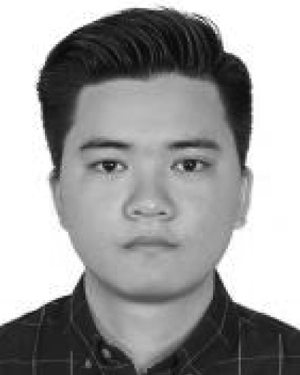
State Key Laboratory of Radio Frequency Heterogeneous Integration, College of Electronics and Information Engineering, Shenzhen University, Shenzhen, China
Run Cong Lv was born in Guandong, China. He is currently pursuing the B.Eng. degree in electronic engineering from Shenzhen University (SZU), Shenzhen, China.
His current research interests include millimeter-wave antenna and filtering antenna design.
Run Cong Lv was born in Guandong, China. He is currently pursuing the B.Eng. degree in electronic engineering from Shenzhen University (SZU), Shenzhen, China.
His current research interests include millimeter-wave antenna and filtering antenna design.View more
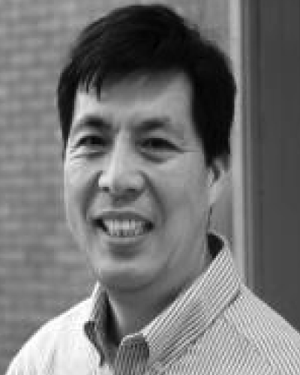
State Key Laboratory of Radio Frequency Heterogeneous Integration, College of Electronics and Information Engineering, Shenzhen University, Shenzhen, China
Wenlong He received the B.Sc. degree in physics from Suzhou University, Suzhou, China, the M.Sc. degree in accelerator physics from the China Academy of Engineering Physics, Beijing, China, and the Ph.D. degree in relativistic electron beams and masers, University of Strathclyde, Glasgow, United Kingdom, in 1983, 1988, and 1996, respectively.
He worked as a Research Scientist with the Department of Physics, University of S...Show More
Wenlong He received the B.Sc. degree in physics from Suzhou University, Suzhou, China, the M.Sc. degree in accelerator physics from the China Academy of Engineering Physics, Beijing, China, and the Ph.D. degree in relativistic electron beams and masers, University of Strathclyde, Glasgow, United Kingdom, in 1983, 1988, and 1996, respectively.
He worked as a Research Scientist with the Department of Physics, University of S...View more
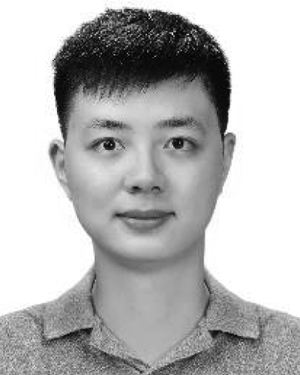
Department of Electrical Engineering, State Key Laboratory of Terahertz and Millimeter Waves, City University of Hong Kong, Hong Kong, China
Chen Feng Yang was born in Wuhan, China, in 1998. He received the B.Eng. degree in electronic and communication engineering from the City University of Hong Kong, Hong Kong, in 2020, where he is currently pursuing the Ph.D. degree with the State Key Laboratory of Terahertz and Millimeter Waves.
His research interests include millimeter-wave/THz multifunctional metasurfaces, transmitarray, and reflectarray antennas.
Chen Feng Yang was born in Wuhan, China, in 1998. He received the B.Eng. degree in electronic and communication engineering from the City University of Hong Kong, Hong Kong, in 2020, where he is currently pursuing the Ph.D. degree with the State Key Laboratory of Terahertz and Millimeter Waves.
His research interests include millimeter-wave/THz multifunctional metasurfaces, transmitarray, and reflectarray antennas.View more

State Key Laboratory of Radio Frequency Heterogeneous Integration, College of Electronics and Information Engineering, Shenzhen University, Shenzhen, China
Guoxiang Shu (Senior Member, IEEE) received the Ph.D. degree from the University of Electronic Science and Technology of China, Chengdu, China, in 2017.
From 2015 to 2017, he has visited the University of Strathclyde, Glasgow, U.K., as a Visiting Researcher. Since September 2017, he has been a Faculty Member with the College of Electronics and Information Engineering, Shenzhen University, Shenzhen, China, where he is curre...Show More
Guoxiang Shu (Senior Member, IEEE) received the Ph.D. degree from the University of Electronic Science and Technology of China, Chengdu, China, in 2017.
From 2015 to 2017, he has visited the University of Strathclyde, Glasgow, U.K., as a Visiting Researcher. Since September 2017, he has been a Faculty Member with the College of Electronics and Information Engineering, Shenzhen University, Shenzhen, China, where he is curre...View more

School of Advanced Engineering, Great Bay University, Dongguan, China
Yanyan Tian was born in Shandong, China, in 1985. She received the M.S. degree in electronic science and technology and the Ph.D. degree in physical electronics from the National Key Laboratory of Science and Technology on Vacuum Electronics, School of Physical Electronics, University of Electronic Science and Technology of China, Chengdu, China, in 2012 and 2018, respectively.
From 2014 to 2015, she was a Senior Engineer ...Show More
Yanyan Tian was born in Shandong, China, in 1985. She received the M.S. degree in electronic science and technology and the Ph.D. degree in physical electronics from the National Key Laboratory of Science and Technology on Vacuum Electronics, School of Physical Electronics, University of Electronic Science and Technology of China, Chengdu, China, in 2012 and 2018, respectively.
From 2014 to 2015, she was a Senior Engineer ...View more
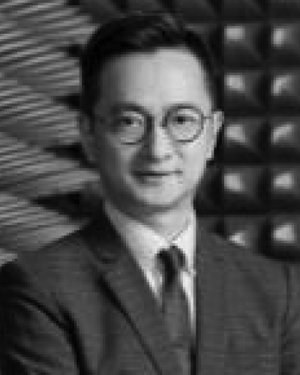
Department of Electrical Engineering, State Key Laboratory of Terahertz and Millimeter Waves, City University of Hong Kong, Hong Kong, China
Hang Wong (Senior Member, IEEE) received the B.Eng., M.Phil., and Ph.D. degrees in electronic engineering from the City University of Hong Kong (CityU), Hong Kong, in 1999, 2002, and 2006, respectively.
He joined the Department of Electrical Engineering at the City University of Hong Kong, Hong Kong, in 2012. He had several visiting professorships at Stanford University, Stanford, CA, USA; University of Waterloo, Waterloo,...Show More
Hang Wong (Senior Member, IEEE) received the B.Eng., M.Phil., and Ph.D. degrees in electronic engineering from the City University of Hong Kong (CityU), Hong Kong, in 1999, 2002, and 2006, respectively.
He joined the Department of Electrical Engineering at the City University of Hong Kong, Hong Kong, in 2012. He had several visiting professorships at Stanford University, Stanford, CA, USA; University of Waterloo, Waterloo,...View more

State Key Laboratory of Radio Frequency Heterogeneous Integration, College of Electronics and Information Engineering, Shenzhen University, Shenzhen, China
Qing-Yi Guo (Member, IEEE) was born in Longyan, Fujian, China. He received the B.E. degree in information engineering and the M.E. degree in electronic and information systems from the South China University of Technology, Guangzhou, China, in 2013 and 2016, respectively. He received the Ph.D. degree in electrical engineering from the City University of Hong Kong, Hong Kong, in 2020.
From 2020 to 2021, he was a Post-Doctoral Fellow with the City University of Hong Kong. He is currently an Assistant Professor with the School of Electronic and Information Engineering, Shenzhen University, Shenzhen, China. His current research interests include microwave filtering circuits and millimeter-wave antennas.
Dr. Guo was a recipient of the Best Paper Award presented at the 2020 Cross-Strait Radio Science and Wireless Technology Conference, Fuzhou, China. He received the Best Paper Award at the 2017 Hong Kong AP/MTT Postgraduate Conference, Hong Kong. He is also a member of the State Key Laboratory of Radio Frequency Heterogeneous Integration, Shenzhen University, Shenzhen, China. He is a reviewer of several internationally referred journal, including the IEEE Antenna and Wireless Propagation Letters and the IEEE Transactions on Antenna and Propagation.
Qing-Yi Guo (Member, IEEE) was born in Longyan, Fujian, China. He received the B.E. degree in information engineering and the M.E. degree in electronic and information systems from the South China University of Technology, Guangzhou, China, in 2013 and 2016, respectively. He received the Ph.D. degree in electrical engineering from the City University of Hong Kong, Hong Kong, in 2020.
From 2020 to 2021, he was a Post-Doctoral Fellow with the City University of Hong Kong. He is currently an Assistant Professor with the School of Electronic and Information Engineering, Shenzhen University, Shenzhen, China. His current research interests include microwave filtering circuits and millimeter-wave antennas.
Dr. Guo was a recipient of the Best Paper Award presented at the 2020 Cross-Strait Radio Science and Wireless Technology Conference, Fuzhou, China. He received the Best Paper Award at the 2017 Hong Kong AP/MTT Postgraduate Conference, Hong Kong. He is also a member of the State Key Laboratory of Radio Frequency Heterogeneous Integration, Shenzhen University, Shenzhen, China. He is a reviewer of several internationally referred journal, including the IEEE Antenna and Wireless Propagation Letters and the IEEE Transactions on Antenna and Propagation.View more

China Academy of Information and Communications Technology, Beijing, China
Xuan Yi was born in Anhui, China. She received the B.Eng. degree in electronic engineering from the Beijing University of Posts and Telecommunications (BUPT), Beijing, China, in 2015, and the Ph.D. degree in electrical engineering from the City University of Hong Kong (CityU), Hong Kong, China, in 2019.
She is currently with the China Academy of Information and Communications Technology (CAICT), Beijing and involved in 3GPP TSG-RAN WG4 for the MIMO OTA standardization activities as the Moderator and Ad hoc Session Chair. Her current research interests include antenna design and over-the-air testing.
Dr. Yi was a recipient of the Best Student Paper Award Finalist at the 2019 IEEE Asia-Pacific Conference on Antennas and Propagation and the Best Student Presenter Awards at the 2019 and 2018 EE Student Research Symposiums, CityU.
Xuan Yi was born in Anhui, China. She received the B.Eng. degree in electronic engineering from the Beijing University of Posts and Telecommunications (BUPT), Beijing, China, in 2015, and the Ph.D. degree in electrical engineering from the City University of Hong Kong (CityU), Hong Kong, China, in 2019.
She is currently with the China Academy of Information and Communications Technology (CAICT), Beijing and involved in 3GPP TSG-RAN WG4 for the MIMO OTA standardization activities as the Moderator and Ad hoc Session Chair. Her current research interests include antenna design and over-the-air testing.
Dr. Yi was a recipient of the Best Student Paper Award Finalist at the 2019 IEEE Asia-Pacific Conference on Antennas and Propagation and the Best Student Presenter Awards at the 2019 and 2018 EE Student Research Symposiums, CityU.View more

State Key Laboratory of Radio Frequency Heterogeneous Integration, College of Electronics and Information Engineering, Shenzhen University, Shenzhen, China
Run Cong Lv was born in Guandong, China. He is currently pursuing the B.Eng. degree in electronic engineering from Shenzhen University (SZU), Shenzhen, China.
His current research interests include millimeter-wave antenna and filtering antenna design.
Run Cong Lv was born in Guandong, China. He is currently pursuing the B.Eng. degree in electronic engineering from Shenzhen University (SZU), Shenzhen, China.
His current research interests include millimeter-wave antenna and filtering antenna design.View more

State Key Laboratory of Radio Frequency Heterogeneous Integration, College of Electronics and Information Engineering, Shenzhen University, Shenzhen, China
Wenlong He received the B.Sc. degree in physics from Suzhou University, Suzhou, China, the M.Sc. degree in accelerator physics from the China Academy of Engineering Physics, Beijing, China, and the Ph.D. degree in relativistic electron beams and masers, University of Strathclyde, Glasgow, United Kingdom, in 1983, 1988, and 1996, respectively.
He worked as a Research Scientist with the Department of Physics, University of Strathclyde, during the period of 1996–2018. He is now a Distinguished Professor with the College of Electronics and Information Engineering and Institute of Microelectronics, Shenzhen University, Shenzhen, China.
His main research interests include electron beams, nanometer-sized electron devices, millimeter-wave ICs, broadband millimeter-wave/terahertz Gyro-TWT amplifiers, and traveling wave tubes (TWTs).
Wenlong He received the B.Sc. degree in physics from Suzhou University, Suzhou, China, the M.Sc. degree in accelerator physics from the China Academy of Engineering Physics, Beijing, China, and the Ph.D. degree in relativistic electron beams and masers, University of Strathclyde, Glasgow, United Kingdom, in 1983, 1988, and 1996, respectively.
He worked as a Research Scientist with the Department of Physics, University of Strathclyde, during the period of 1996–2018. He is now a Distinguished Professor with the College of Electronics and Information Engineering and Institute of Microelectronics, Shenzhen University, Shenzhen, China.
His main research interests include electron beams, nanometer-sized electron devices, millimeter-wave ICs, broadband millimeter-wave/terahertz Gyro-TWT amplifiers, and traveling wave tubes (TWTs).View more

Department of Electrical Engineering, State Key Laboratory of Terahertz and Millimeter Waves, City University of Hong Kong, Hong Kong, China
Chen Feng Yang was born in Wuhan, China, in 1998. He received the B.Eng. degree in electronic and communication engineering from the City University of Hong Kong, Hong Kong, in 2020, where he is currently pursuing the Ph.D. degree with the State Key Laboratory of Terahertz and Millimeter Waves.
His research interests include millimeter-wave/THz multifunctional metasurfaces, transmitarray, and reflectarray antennas.
Chen Feng Yang was born in Wuhan, China, in 1998. He received the B.Eng. degree in electronic and communication engineering from the City University of Hong Kong, Hong Kong, in 2020, where he is currently pursuing the Ph.D. degree with the State Key Laboratory of Terahertz and Millimeter Waves.
His research interests include millimeter-wave/THz multifunctional metasurfaces, transmitarray, and reflectarray antennas.View more

State Key Laboratory of Radio Frequency Heterogeneous Integration, College of Electronics and Information Engineering, Shenzhen University, Shenzhen, China
Guoxiang Shu (Senior Member, IEEE) received the Ph.D. degree from the University of Electronic Science and Technology of China, Chengdu, China, in 2017.
From 2015 to 2017, he has visited the University of Strathclyde, Glasgow, U.K., as a Visiting Researcher. Since September 2017, he has been a Faculty Member with the College of Electronics and Information Engineering, Shenzhen University, Shenzhen, China, where he is currently a Tenured Associate Professor. He has authored or coauthored over 100 technical publications, including 38 IEEE Transaction articles. His current research interests include millimeter-wave and terahertz high-power vacuum electron oscillators and amplifiers, millimeter-wave dielectric measurement, and millimeter-wave and terahertz passive devices (slow wave structures, couplers, mode convertors, resonant cavities, and antennas).
Dr. Shu is the Principal Investigator of 12 research projects, including four national-class, three provincial-class, and three municipal-class projects. He has been granted the title of Shenzhen High-level Talent and is a Core Member of the Shenzhen Peacock Plan Team. He has served as a Guest Editor for a few SCI journals, such as Electronics and Mircromachines, and a reviewer for more than ten SCI journals.
Guoxiang Shu (Senior Member, IEEE) received the Ph.D. degree from the University of Electronic Science and Technology of China, Chengdu, China, in 2017.
From 2015 to 2017, he has visited the University of Strathclyde, Glasgow, U.K., as a Visiting Researcher. Since September 2017, he has been a Faculty Member with the College of Electronics and Information Engineering, Shenzhen University, Shenzhen, China, where he is currently a Tenured Associate Professor. He has authored or coauthored over 100 technical publications, including 38 IEEE Transaction articles. His current research interests include millimeter-wave and terahertz high-power vacuum electron oscillators and amplifiers, millimeter-wave dielectric measurement, and millimeter-wave and terahertz passive devices (slow wave structures, couplers, mode convertors, resonant cavities, and antennas).
Dr. Shu is the Principal Investigator of 12 research projects, including four national-class, three provincial-class, and three municipal-class projects. He has been granted the title of Shenzhen High-level Talent and is a Core Member of the Shenzhen Peacock Plan Team. He has served as a Guest Editor for a few SCI journals, such as Electronics and Mircromachines, and a reviewer for more than ten SCI journals.View more

School of Advanced Engineering, Great Bay University, Dongguan, China
Yanyan Tian was born in Shandong, China, in 1985. She received the M.S. degree in electronic science and technology and the Ph.D. degree in physical electronics from the National Key Laboratory of Science and Technology on Vacuum Electronics, School of Physical Electronics, University of Electronic Science and Technology of China, Chengdu, China, in 2012 and 2018, respectively.
From 2014 to 2015, she was a Senior Engineer with Beijing Vacuum Electronics Research Institute (BVERI), Beijing, China. She is currently working with Great Bay University, Dongguan, China. Her current research field is electron device and RF power source.
Yanyan Tian was born in Shandong, China, in 1985. She received the M.S. degree in electronic science and technology and the Ph.D. degree in physical electronics from the National Key Laboratory of Science and Technology on Vacuum Electronics, School of Physical Electronics, University of Electronic Science and Technology of China, Chengdu, China, in 2012 and 2018, respectively.
From 2014 to 2015, she was a Senior Engineer with Beijing Vacuum Electronics Research Institute (BVERI), Beijing, China. She is currently working with Great Bay University, Dongguan, China. Her current research field is electron device and RF power source.View more

Department of Electrical Engineering, State Key Laboratory of Terahertz and Millimeter Waves, City University of Hong Kong, Hong Kong, China
Hang Wong (Senior Member, IEEE) received the B.Eng., M.Phil., and Ph.D. degrees in electronic engineering from the City University of Hong Kong (CityU), Hong Kong, in 1999, 2002, and 2006, respectively.
He joined the Department of Electrical Engineering at the City University of Hong Kong, Hong Kong, in 2012. He had several visiting professorships at Stanford University, Stanford, CA, USA; University of Waterloo, Waterloo, ON, Canada; University of College London, London, U.K.; and University of Limoges, Limoges, France, in 2011, 2013, 2014, and 2015, respectively.
Dr. Wong is the Director of Applied Electromagnetics Laboratory at CityU and the Deputy Director of the State Key Laboratory of Terahertz and Millimeter Waves, City University of Hong Kong. His research interests are antenna technologies of 5G, 6G, millimeter-wave, and terahertz applications. His achievements led to receiving numerous awards at local, national, and international conferences. For example, he received the Best Paper Award at the National Conference 2017 Les Journées Nationales Microondes in France; the Best Paper Award at the 2017 IEEE International Workshop on Electromagnetics in the U.K.; the Best Associate Editor Award 2016 of IEEE Antennas and Wireless Propagation Letters in the U.S.; and an Outstanding Scientist Award of 2016 in Shenzhen city presented by Shenzhen Science and Technology Bureau. He was awarded to lead a major project supported by the Ministry of Industry and Information Technology of PRC to develop new antenna elements for TD-LTE and 5G applications. He has over 200 publications, two coauthors of book chapters, and 20 U.S. and China patents. He is the Chair of the IEEE Hong Kong Section of the Antennas and Propagation (AP)/Microwave Theory and Techniques (MTT) Chapter. He was the IEEE APS Region-10 Representative. He is an Associate Editor of the IEEE Transactions on Antennas and Propagation and IEEE Antennas and Wireless Propagation Letters. He was the General Co-Chair of the Asia Pacific Microwave Conference (AMPC) 2020, Hong Kong; and the General Chair of Cross-Strait Radio Science and Wireless Technology Conference 2021, Shenzhen, China.
Hang Wong (Senior Member, IEEE) received the B.Eng., M.Phil., and Ph.D. degrees in electronic engineering from the City University of Hong Kong (CityU), Hong Kong, in 1999, 2002, and 2006, respectively.
He joined the Department of Electrical Engineering at the City University of Hong Kong, Hong Kong, in 2012. He had several visiting professorships at Stanford University, Stanford, CA, USA; University of Waterloo, Waterloo, ON, Canada; University of College London, London, U.K.; and University of Limoges, Limoges, France, in 2011, 2013, 2014, and 2015, respectively.
Dr. Wong is the Director of Applied Electromagnetics Laboratory at CityU and the Deputy Director of the State Key Laboratory of Terahertz and Millimeter Waves, City University of Hong Kong. His research interests are antenna technologies of 5G, 6G, millimeter-wave, and terahertz applications. His achievements led to receiving numerous awards at local, national, and international conferences. For example, he received the Best Paper Award at the National Conference 2017 Les Journées Nationales Microondes in France; the Best Paper Award at the 2017 IEEE International Workshop on Electromagnetics in the U.K.; the Best Associate Editor Award 2016 of IEEE Antennas and Wireless Propagation Letters in the U.S.; and an Outstanding Scientist Award of 2016 in Shenzhen city presented by Shenzhen Science and Technology Bureau. He was awarded to lead a major project supported by the Ministry of Industry and Information Technology of PRC to develop new antenna elements for TD-LTE and 5G applications. He has over 200 publications, two coauthors of book chapters, and 20 U.S. and China patents. He is the Chair of the IEEE Hong Kong Section of the Antennas and Propagation (AP)/Microwave Theory and Techniques (MTT) Chapter. He was the IEEE APS Region-10 Representative. He is an Associate Editor of the IEEE Transactions on Antennas and Propagation and IEEE Antennas and Wireless Propagation Letters. He was the General Co-Chair of the Asia Pacific Microwave Conference (AMPC) 2020, Hong Kong; and the General Chair of Cross-Strait Radio Science and Wireless Technology Conference 2021, Shenzhen, China.View more


